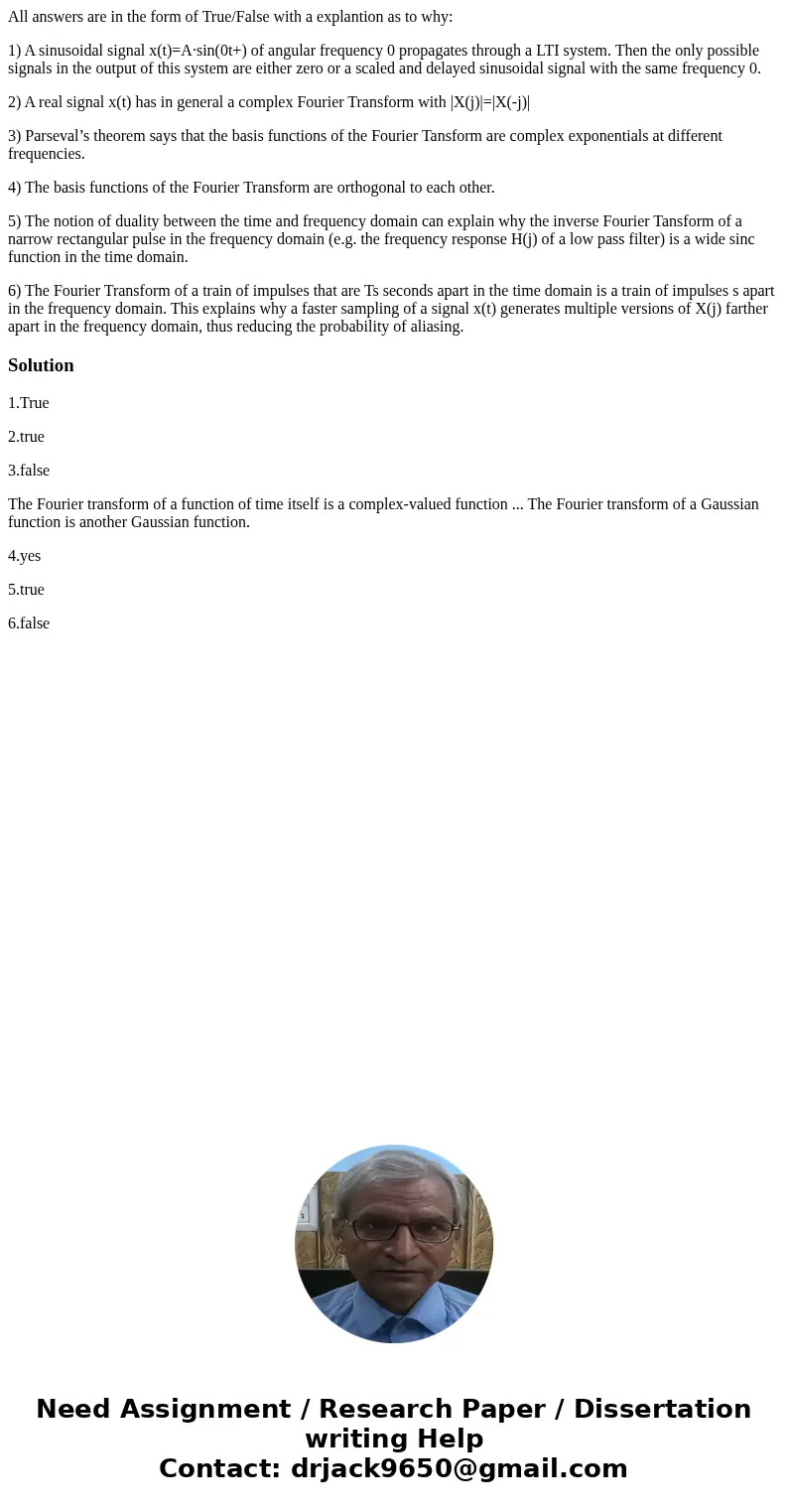All answers are in the form of TrueFalse with a explantion a
All answers are in the form of True/False with a explantion as to why:
1) A sinusoidal signal x(t)=A·sin(0t+) of angular frequency 0 propagates through a LTI system. Then the only possible signals in the output of this system are either zero or a scaled and delayed sinusoidal signal with the same frequency 0.
2) A real signal x(t) has in general a complex Fourier Transform with |X(j)|=|X(-j)|
3) Parseval’s theorem says that the basis functions of the Fourier Tansform are complex exponentials at different frequencies.
4) The basis functions of the Fourier Transform are orthogonal to each other.
5) The notion of duality between the time and frequency domain can explain why the inverse Fourier Tansform of a narrow rectangular pulse in the frequency domain (e.g. the frequency response H(j) of a low pass filter) is a wide sinc function in the time domain.
6) The Fourier Transform of a train of impulses that are Ts seconds apart in the time domain is a train of impulses s apart in the frequency domain. This explains why a faster sampling of a signal x(t) generates multiple versions of X(j) farther apart in the frequency domain, thus reducing the probability of aliasing.
Solution
1.True
2.true
3.false
The Fourier transform of a function of time itself is a complex-valued function ... The Fourier transform of a Gaussian function is another Gaussian function.
4.yes
5.true
6.false

 Homework Sourse
Homework Sourse